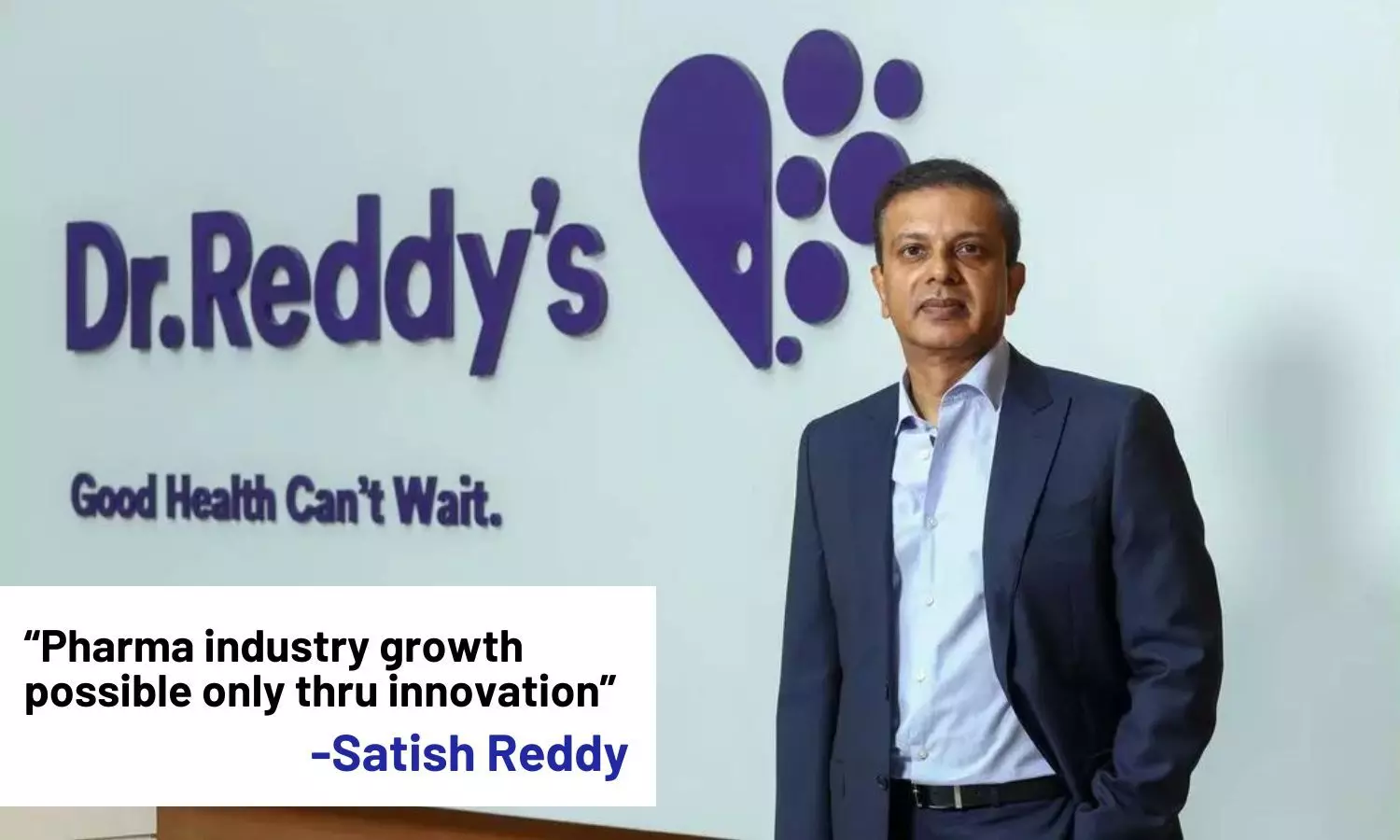Pharma industry growth possible only thru innovation: Satish Reddy
Indian Pharmaceutical Alliance has set a vision for the industry to reach $130 billion by 2030, from the current $50 billion, says Dr Reddy’s Chairman
Pharma industry growth possible only thru innovation: Satish Reddy

Hyderabad: The Indian Pharmaceutical Alliance has set a vision for the industry to reach $130 billion by 2030, from the current $50 billion. This growth can be achieved only through innovation, Satish Reddy of Dr Reddy’s Laboratories Ltd said. The city-based pharma major released a whitepaper derived from the joint roundtable, ‘Emerging Frameworks in Innovation,’ hosted by Dr Reddy’s Institute of Life Sciences, and chaired by Satish Reddy. The session brought together leaders from academia, pharma, healthcare and innovation to share their perspectives on emerging innovation ecosystems in healthcare, and India’s potential to excel in research and development.
Reddy said, “Look at China. They kick-started innovation game in 2008 or 2010. Look where they are today. If India’s pharmaceutical industry has to up its game in innovation then bold and radical steps have to be taken.”
The big pharma companies’ share of innovation continues to decline as mid-size companies contribute to overall R&D growth. The top 10 pharma companies’ share of the global biopharma pipeline decreased from 13.4 per cent in 2011 to 4.1 per cent in 2023. Platform biotech companies are now producing new drugs at scale. About a quarter of global biopharma R&D activity is witnessed in China, which stands second for active R&D, behind the US, with 24 per cent of the industry pipeline and 5,033 assets under development.
Reviewing the current state of biopharma innovation worldwide, Dr Trajko Spasenovski, vice president, Custom Solutions, Citeline, said, “The productive pipeline is growing and there is still lot of R&D to take place. There is lot of potential for companies like Dr Reddy’s and several other Indian companies to tap into these innovative markets.”
On investments that are needed to accelerate drug development, Professor Jack W Szostak, Nobel Laureate, said, “What accelerates drug development is large-scale investments by the government. Another thing that has a lot of history in the United States is large investments by venture capital arms. VC investments are kind of a mixed bag. Sometimes they have a short-sighted view of things, but on the other hand, they can catalyse development. It would be exciting if the inputs of financial resources from those two sources could be expanded in India.” On need for clarity on taking a drug from preclinical to clinical and regulatory toxicity studies in India, Dr Srinivas Oruganti, Director, Dr Reddy’s Institute of Life Sciences said, “The existing regulation reads like a list that is open to interpretation. The US FDA is a good model for clear industry guidance. The US FDA uses a consultative approach. They try to encourage scenarios where there is an unmet medical need and they give feedback to the industry. That is something we do not have in India.”

